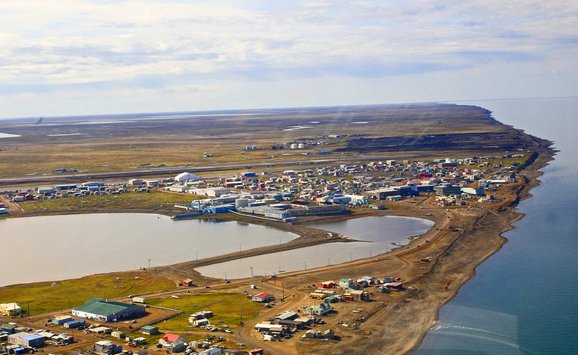Welcome to the RFF Weekly Policy Commentary, which is meant to provide an easy way to learn about important policy issues related to environmental, natural resource, energy, urban, and public health problems.
The Great Lakes region faces a wide array of environmental problems due to pollution, inadequate capacity for wastewater treatment, and invasive species, which results in degraded water quality and wetlands, depleted fish stocks, contaminated beaches, and so on. This week’s commentary, by Soren Anderson, Jennifer Read, and Donald Scavia, describes a wide-ranging set of recommendations to address these diverse challenges. The authors also summarize, insofar as possible, evidence on the costs and benefits of these measures.
 The Great Lakes are among North America’s most important natural resources. These enormous bodies of water span some 94,000 square miles, accounting for 90 percent of America’s and 20 percent of the world’s surface fresh water. The lakes and surrounding watersheds sustain thousands of species of plants, fish, waterfowl, birds, and mammals. The Great Lakes basin is also home to more than 35 million people in the United States and Canada. The Great Lakes are among North America’s most important natural resources. These enormous bodies of water span some 94,000 square miles, accounting for 90 percent of America’s and 20 percent of the world’s surface fresh water. The lakes and surrounding watersheds sustain thousands of species of plants, fish, waterfowl, birds, and mammals. The Great Lakes basin is also home to more than 35 million people in the United States and Canada.
Yet the Great Lakes face numerous environmental problems that are harming sensitive ecosystems and undermining human health, recreation, and commercial transport. While the environmental problems are widespread, they are particularly acute in “areas of concern” (or AOCs), which suffer from habitat loss, degraded fish and wildlife populations, fish tumors and deformities, beach closings, fish consumption advisories, excessive nutrient pollution, and undrinkable water. In addition, many AOCs are essentially underwater toxic sites, having been exposed to a decades-long buildup of contaminated sediments. To halt and reverse this environmental degradation, 1,500 government officials and private-sector stakeholders, known as the “Great Lakes Regional Collaboration,” developed a strategy with specific recommendations that address many of the underlying problems. Municipal wastewater Recommendation: Upgrade municipal wastewater treatment facilities. Invasive species Recommendations: Require foreign shippers to treat or exchange ballast water before entering the lakes; prevent invaders from entering through canals and waterways (e.g., by funding the Chicago Sanitary and Ship Canal barrier); impose stricter rules for trade in live organisms. Nonpoint source pollution Recommendations: Protect and restore wetlands and streamside buffers; encourage farming practices that reduce runoff; promote nutrient and manure management plans for livestock operations. Contamination Recommendations: Curtail principal sources of mercury, PCBs, dioxins, and other toxic substances; use tax incentives to prevent new chemicals from entering the lakes; support efforts to combat global emissions of toxic substances; increase funding for research, surveillance, and forecasting to deal with chemical threats; start a public education campaign to provide consistent messages about fish consumption and the role of individuals in reducing toxic pollution; clean up contaminated sediments in AOCs. This is an ambitious program, and implementing its recommendations would cost some $27 billion. What would be the expected return on this investment? |
 Soren Anderson is an assistant professor of Economics and Agricultural, Food, and Resource Economics at Michigan State University. He received his Bachelor’s degree from Macalester College and a Master’s and Doctorate from the University of Michigan. He has previously served on the President’s Council of Economic Advisers. Soren Anderson is an assistant professor of Economics and Agricultural, Food, and Resource Economics at Michigan State University. He received his Bachelor’s degree from Macalester College and a Master’s and Doctorate from the University of Michigan. He has previously served on the President’s Council of Economic Advisers.
|
Potential benefits
In 2007, a team of economists and scientists led by ourselves and other collaborators attempted to calculate the net economic benefits of this strategy. We translated its list of recommendations into specific ecological improvements and then assigned values to these improvements, scaling by dollar benefits per person and the number of beneficiaries.
We conservatively estimated that upgrading wastewater treatment facilities would reduce beach closings and advisories by 20 percent. Based on the estimated benefits to beachgoers of fewer closings and the estimated number of beachgoers, this translates to economic benefits of $2 billion to $3 billion.
The plans to restore wetlands and prevent the spread of invasive species would halt and reverse the downward trend in game fish populations, likely resulting in a 25 to 50 percent increase in fish stocks above a “do nothing” scenario. We conservatively estimated that greater fish abundance would yield $1.1 billion to $5.8 billion in benefits to recreational anglers. Although some studies have estimated the benefits to anglers of reducing contamination in fish, we were unable to quantify the reduction in fish contamination levels.
Restoring wetlands would also generate moderate benefits of $100 million to $200 million for birdwatchers and $7 million to $100 million for waterfowl hunters.
The strategy would conservatively reduce sedimentation by 10 to 25 percent, improving water clarity at beaches and benefiting lakefront property owners by $2.5 billion as measured by increased waterfront property values. The reduction in sedimentation would also reduce costs for municipal water treatment by $50 million to $125 million.
Cleaning up contaminated sediments in AOCs would benefit aquatic ecosystems and reduce real and perceived health risks. One study found that households living in a Great Lakes watershed would be willing to pay $150 per year to clean up contaminated sediment completely over the next one to two decades. With more than 11 million households in the basin, this implies $12 billion to $19 billion in benefits. While large, these estimates reflect benefits to households that live near AOCs, as well as those who simply benefit from knowing the areas are being restored. Therefore the number of beneficiaries is large.
This last set of results suggests that people living outside the basin may also benefit from the strategy. To be conservative, however, we deliberately confined our analysis to Great Lakes anglers, beachgoers, shoreline residents, and others living in the basin. We did not include the “existence” value that millions of people around the country might derive from knowing that the lakes are cleaner.
Our analysis also deliberately excluded many expected benefits for which there are neither reliable calculation methods nor good studies from which to extrapolate. For example, we did not estimate the general benefits of plant and animal health and biodiversity; our calculations involved only anglers, hunters, and birdwatchers pursuing a limited number of species. Our analysis for halting the spread of invasive species counted only the indirect impacts on fish stocks; the direct benefits of preventing future invasions could be huge if the invaders are costly to contain, fundamentally alter food webs, or cause major economic and ecological dislocation. Also, we did not account for the likelihood that reduced sedimentation and nutrient loads would mean less rotting algae on beaches, which is odorous, unsightly, attractive to nuisance animals, and costly to remove. Finally, we did not include the benefits from improved hydrology, which would diminish the need for dredging, reduce flooding and erosion, and enhance groundwater supplies.
Because we were conservative in valuing individual ecological benefits, and because we were unable to quantify many benefits, our estimates of aggregate benefits are also conservative. Nevertheless, for a program that would cost about $27 billion, we were able to quantify aggregate benefits of $18 billion to $31 billion.
Recognizing that this analysis most likely missed some important benefits, we also conducted a separate analysis, asking what would happen if the strategy increased residential property values by 10 percent in coastal census tracts and by 1 to 2 percent in metro areas adjacent to the lakes. These increases are consistent with studies that estimate the benefits of Great Lakes cleanups in terms of higher property values. Based on this admittedly speculative approach, we estimated benefits of $30 billion to $40 billion—well above the strategy’s cost.
Broader impacts
The Great Lakes region has suffered a decades-long economic decline, and now the entire nation is in the midst of recession. Would the restoration strategy provide any broader benefits?
Yes, it probably would.
There is considerable evidence showing that people are willing to pay to locate in areas with high environmental quality. David Albouy at the University of Michigan, for example, finds that households are willing to pay the equivalent of 2 percent of their annual income to live in coastal cities, including near the Great Lakes. People clearly place a high value on the lakes as a natural amenity. By maintaining and enhancing this important resource, the strategy would likely make the Great Lakes basin more attractive, helping the region retain and attract workers and businesses.
Moreover, much of the strategy, particularly its plans to upgrade wastewater treatment facilities and restore damaged habitats, would qualify as “shovel-ready” projects under a broad economic stimulus plan. Indeed, the stimulus plan recently passed by Congress and signed by President Obama already includes $4 billion for states to upgrade sewers and drinking water infrastructure, $1.45 billion of which would go to the Great Lakes region. Our research indicates that this spending is likely to generate substantial long-run environmental benefits in addition to its short-run stimulus effect.
***
Views expressed are those of the author. RFF does not take institutional positions on legislative or policy questions.
To receive the Weekly Policy Commentary by email, or to submit comments and feedback, contact [email protected].
|
 Jennifer Read is the assistant director and research coordinator for Michigan Sea Grant, University of Michigan. She received a Bachelor’s and Doctorate degree from the University of Western Ontario and her Master’s from McMaster Universtiy in Canada.
Jennifer Read is the assistant director and research coordinator for Michigan Sea Grant, University of Michigan. She received a Bachelor’s and Doctorate degree from the University of Western Ontario and her Master’s from McMaster Universtiy in Canada. Donald Scavia is the Graham Family Professor and director of the Graham Environmental Sustainability Institute at the University of Michigan. He received his Bachelor’s and Master’s degrees from Rensselaer Polytechnic Institute and a doctorate in Environmental Engineering from the University of Michigan.
Donald Scavia is the Graham Family Professor and director of the Graham Environmental Sustainability Institute at the University of Michigan. He received his Bachelor’s and Master’s degrees from Rensselaer Polytechnic Institute and a doctorate in Environmental Engineering from the University of Michigan.



